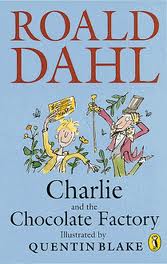Gone Girl – Gillian Flynn
I generally don’t tend to read thrillers, so this was an interesting change, though Flynn’s novel is not a typical thriller. Be warned – this review gives away plot twists!
Gone Girl is the story of Nick and Amy and their marriage. It is also a novel about disappearing, murder, the media, money, betrayal and revenge. The book opens on the day of their fifth wedding anniversary, present day, when Amy mysteriously disappears and their house becomes a crime scene. The fragility of their relationship is questioned and Nick soon becomes a suspect. He, the police, his twin sister, the townspeople, Amy’s parents and the media, launch into investigating her disappearance. Nick follows the traditional anniversary treasure hunt she has left him but it is not long before he realises the sinister side to the clues.
The novel is narrated by both Amy and Nick: Nick as he struggles in the aftermath of his wife’s disappearance, and Amy through diary entries since the day they met. The reader is pushed and pulled from one to the other, apparently given both viewpoints. However, in part two, the plot thickens. The reader is confronted with Amy after the disappearance. ‘Diary Amy’, it turns out, is only made up. We are assured that she will “sort this out: the true and the not true and the might as well be true”, but how are we to know whether or not to believe her?
A novel about reaching the truth, the facts of Amy’s disappearance, becomes an interrogation of what truth really means and whether or not we can ever really be certain of others’ thoughts. Flynn plays with the idea of truth in fiction on a new level; narrators are not just unreliable, hiding things and skewing events to their viewpoint, but narratives involve outright lies and fabrications so the reader is placed in the position of the police, the outsider, as well as the confidant. As Amy’s father stops himself from saying (because he thinks it sounds like only something someone in a movie would say), “I don’t know what to believe anymore”. Neither does the reader.
Gone Girl is certainly gripping and filled with shocks. It is a dark, disturbing story, full of psychological depth that leaves you with a bleak view of relationships. I found the characters increasingly unlikeable – Nick has been cheating on his wife for a year and tells unnecessary lies to the police; Amy frames him for murder and then commits murder herself. We also find out the false accusations she has made in the past to bring others down. Even the minor characters are not presented in a good light – the friends Amy makes at the cabins steal from her, her parents are pushy and self-absorbed, the neighbours are deluded and interfering.
Both Amy and Nick seem masters of deception and at points pretend to be someone else; we are shown the danger in doing so – how long can you pretend before you become the person you are pretending to be? Do we ever really see their ‘real’ characters, or do they only perform roles? We must also consider them as writers – both Amy and Nick at times have been writers for a living, and both have the ability to tell a good story, whether is it true or not. Isn’t fiction itself, after all, just ‘pretending’?
The end brings the promise of more nightmares, as Nick and Amy stay together to bring up their child. Despite all they have done to each other, Nick realises, slightly unrealistically I have to say, “I can’t imagine my story without Amy. She is my forever antagonist” in the “never-ending war story of our marriage”. But it is Amy who is given the last word; she has not finished manipulating him, or us, yet.

